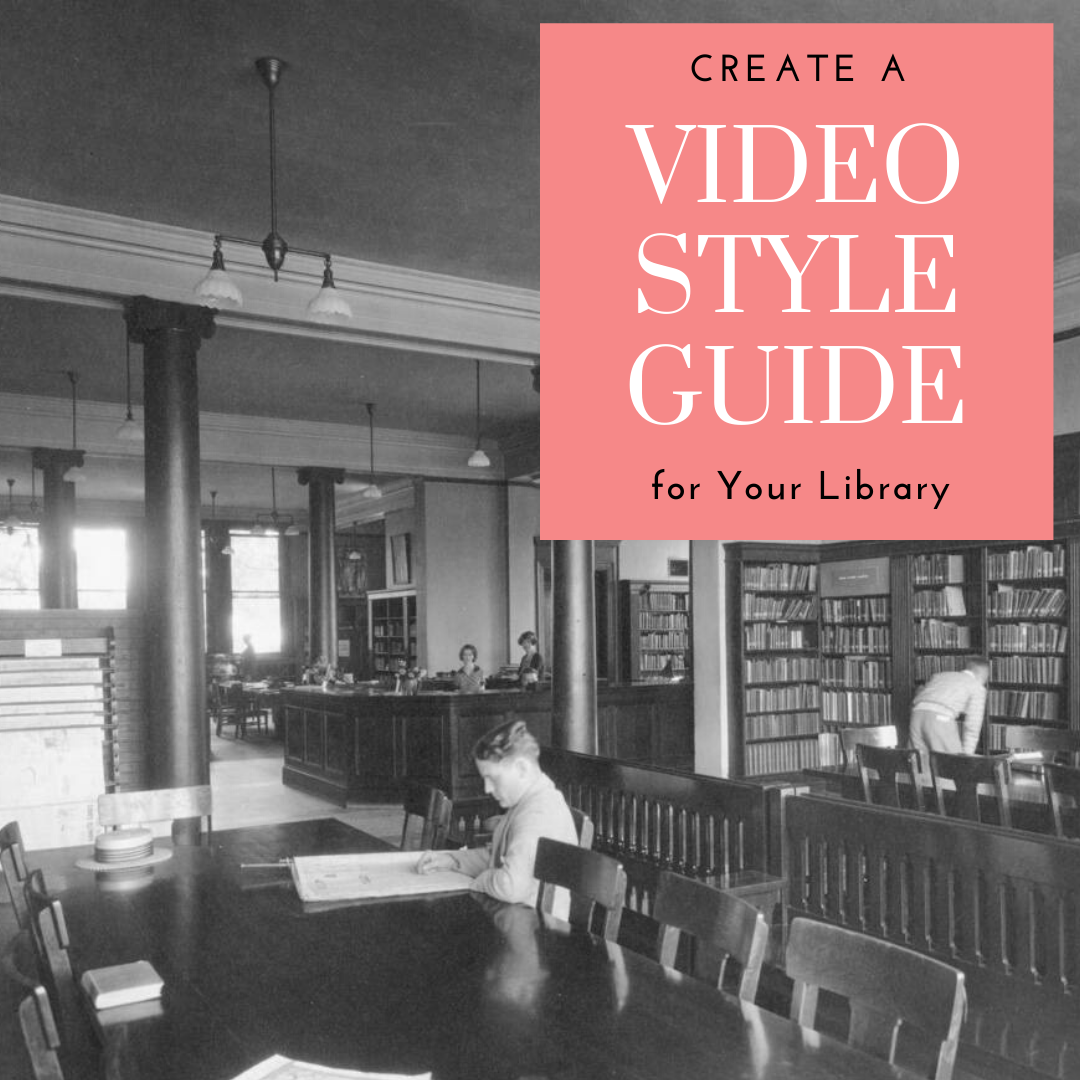
There’s a trend in library marketing now. It’s born out of necessity and determination.
More libraries are producing videos. They’re using the format to deliver programs to their community. They’re using video to explain the value of their library, as they brace for the economic impact of the pandemic.
I’ve long been a fan of video library marketing. And, even before COVID-19, there was mounting evidence that video is an effective and engaging way to communicate.
Video is easy to produce, really. Anyone with a smartphone and some editing software can make cool videos that look professional. My 19-year-old taught herself to edit this week in about two days’ time. I imagine many of you are doing the same thing.
But there’s one step in the process you may have missed. And for this, I must thank Mary from Evergreen Park Library. She asked me to talk about creating a video style guide.
Why you need a video style guide
Any content coming out of your library will need to look like it’s coming from your library!
It’s the same philosophy you may have for any print material you create. You likely have rules and specifications about the look of the text, the placement of the logo, the use of colors, and more. Even if your guidelines are just a few sentences, someone along the line has likely laid out the rules.
Your videos need a similar set of guidelines. We want people to be able to recognize your work on all platforms.
And once you create a video style guide, it’s important to make sure everyone who creates content adheres to it. It’s incredibly important that we reinforce your library’s brand to your community. We want them to immediately know the video was produced by your library. Later, when we need support for funding, they’ll remember your work and the value you provide.
Creating your video style guide
In your style guide, answer these questions.
- Logo: How often will your logo be used in the video? Where does it need to appear on the screen? How big should it be? What color should it be? If you have several versions of your logo, which one will be used in videos?
- Fonts: What font should be used for onscreen text? What color does it need to be? How large should it be? When should it appear?
- Graphics: If your video creators are adding additional graphics, what colors are allowed? What style of graphic should they use? What program should they use to create them?
- Video: How should shots be framed? What resolution do you want recorded? What aspect ratio will be allowed? Do shots need to be focused? Does video need to be stable or will you allow shaky shots?
- Audio: How loud should audio be in your videos? Should on camera talent use a microphone, headsets, or camera audio? If they edit music into the final product, how loud should the music be versus spoken words?
- Talent: Which library staff members are permitted to record, edit, and upload videos? Should on-camera library staff wear something specific, like your library’s uniform shirt or a library branded t-shirt?
- Process: Is there a senior staff member who must give final approval for your video? How will the video be transferred between staff members at various stages of editing, approval, and posting?
- Patron privacy: How do you go about getting permission from everyone who appears on camera, even in the background? This is especially important when library buildings reopen, and we start capturing video of patrons. It’s likely part of your library’s overall privacy policy. So, check to see what kind of permission you need to get from participants and set guidelines to make sure your video creators know that’s part of their responsibility.
- Liability and copyright issues: What music can your video creators legally use? What still photos can they legally use? What extra footage can they legally use? Be explicit about fair use standards.
Examples of video style guides
Washington University School of Medicine
You might also want to read these
Videos Can Reach Library Users at Home Now and in the Future. Here’s Your Starter Kit.
Subscribe to this blog and you’ll receive an email every time I post. To do that, click on the “Follow” button in the bottom left-hand corner of the page. Connect with me on YouTube, Twitter, Instagram, and LinkedIn.
May 4, 2020 at 1:44 pm
Thank you Angela!
LikeLike
July 9, 2020 at 2:24 pm
Hey Angela,
Can you do a post about the accessibility doctrines for a library website and social media?
Thanks!
Jennifer Black
Director of Marketing
Lorain Public Library System
351 W. Sixth Street
Lorain, OH 44052
440-244-1192 x8230
jblack@lpls.info
LikeLike
July 9, 2020 at 2:42 pm
Great idea… will do. Thank you!
LikeLike